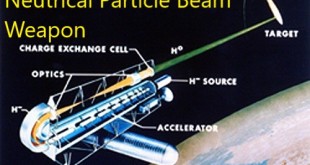By 2020, there are expected to be more than 200 billion interconnected devices within the Internet of Things framework – these will generate an incredible amount of data that will need processing. Traditionally, the processing of data in electronics has relied on integrated circuits (chips) featuring vast numbers of transistors …
Read More »Yearly Archives: 2020
Researchers use Graphene for miniature inductors enabling Ultra-Miniaturized Electronics Devices
The inductors along with capacitors and resistors, inductors are one of the three passive elements that are the foundations of all electronics. An inductor works by inducing a magnetic field as an electric current flows through its coil of wire. This magnetic field temporarily stores electric energy as magnetic energy, …
Read More »US Army’s Warfighter Network (WIN-T) provides high-speed, high-capacity and secure reliable voice, video and data communications anytime, anywhere without the need for fixed infrastructure
Today’s soldiers expect to have network access anywhere, anytime. With the Warfighter Information Network-Tactical (WIN-T), enables mission command and secure reliable voice, video and data communications on-the-move anytime, anywhere without the need for fixed infrastructure. First deployed in Iraq in 2004, WIN-T meant soldiers “had a high-speed, interoperable voice …
Read More »Neutron Beams can detect Nuclear Warheads and disable them
Despite making reductions in their arsenals, both the USA and Russia have extensive and expensive programmes under way to replace and modernize their nuclear warheads, missile and aircraft delivery systems, and nuclear weapon production facilities. The Nuclear Race between US, Russia, and China through their continuous modernization of all the …
Read More »Militaries developing Vehicle mounted Lasers Directed Energy Weapons to counter swarm of Drones , C-RAM (Counter Rocket, Artillery and Mortar) and subsonic cruise missiles
The drones have emerged as a major new threat to civilian infrastructure and military. The militant organizations have started employing drones to further their terrorism. Jihadi groups fighting the Syrian government – most notably ISIS and Jabhet al-Nusra – are extensively using advanced drones to pinpoint the Syrian Army’s locations, …
Read More »High-assurance Network encryptors secure voice, video, and data moving over public and private IP networks
Protecting network transmitted data against cyber attacks and data breaches is imperative for government agencies. Data network eavesdropping, innocent error or technical failure, data tampering and data theft have all become commonplace. The implications of a significant breach are often catastrophic. Encryption is a popular and effective method …
Read More »DARPA’s Safe Gene editing program developing tools to prevent Global Bioterrorism and Biowarfare threat
Gene editing technologies have captured increasing attention from healthcare professionals, policymakers, and community leaders in recent years for their potential to selectively disable cancerous cells in the body, control populations of disease-spreading mosquitos, and defend native flora and fauna against invasive species, among other uses. The potential national security applications …
Read More »Avalanches, the most destructive natural hazards threatening human life, and built structures in mountainous regions, require accurate early warning and predicition systems
Snow avalanches are among the most destructive natural hazards threatening human life, ecosystems, built structures, and landscapes in mountainous regions. Avalanches and landslides are common in Himalayan Kashmir. Avalanches have caused some of the heaviest tolls for the Indian and Pakistani armies camping in the region. Each winter in …
Read More »Heterogeneous Integration Technology enhance capability of military RADAR, communications, imaging and sensing systems, DARPA’s DAHI, and CHIPS led its development
Modern warfare is increasingly dependent on microelectronics capabilities that sense the environment, convert the signals into data streams, process the information, and generate a response. In this sense, Aerospace and Defense (A-D) systems are quite similar to commercial systems that perform communications and computations, while taking advantage of the advancement …
Read More »Countries developing Neutron guns as particle beam directed energy weapons to destroy enemy missiles
A neutron beam can destroy electronics and that would be useful in warfare. The U.S. Defense Strategic Defense Initiative put into development the technology of a neutral particle beam to be used as a weapon in outer space. Neutral beam accelerator technology was developed at Los Alamos National Laboratory. According to …
Read More » International Defense Security & Technology Your trusted Source for News, Research and Analysis
International Defense Security & Technology Your trusted Source for News, Research and Analysis









